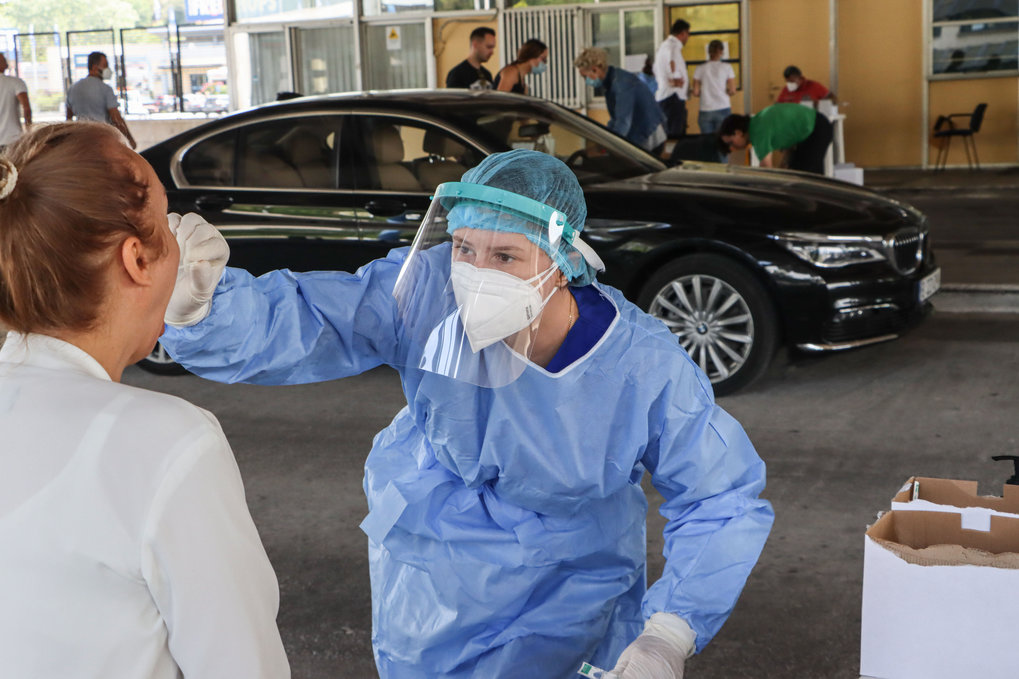New viral variants increase the urgency to consistently reduce Covid-19 case rates across Europe
Scientists from across Europe are calling for an action plan in order to reduce Covid-19 cases in a coordinated manner across Europe. Specifically, they appeal to the European states to aim for a seven-day incidence rate of 10 cases per 100,000 per week or below. Particularly in view of the new variants of the SARS-CoV-2 coronavirus, they consider that a deci-sive and coordinated Europe-wide approach is necessary in order to con-tain the pandemic. Viola Priesemann (Max Planck Institute for Dynamics and Self-Organization), Melanie M. Brinkmann (Helmholtz Centre for Infec-tion Research), and Clemens Fuest (ifo Institute) explained their pro-posals at a press conference held by the ifo Institute.

The world will have to live with coronavirus for the foreseeable future - at least until large parts of the population have been vaccinated against Covid-19. Moreover, the current developments in Europe show that the pandemic cannot be controlled if countries proceed in an uncoordinated manner. The virus knows no borders; it will always spread from regions with high numbers of infections to regions where there have been relatively few infections. New virus variants - such as B.1.1.7 from the UK - could jeopardize the successes achieved so far in the fight against the pandemic and further fuel the infection. Scientists from numerous European countries therefore explain their demands for a common European approach in a position paper published in The Lancet.
"The lower the case numbers, the easier it is to control the pandemic, the more freedom we can afford, and the better for the economy", said Viola Priesemann, Research Group Leader at the Max Planck Institute for Dynamics and Self-Organization, at the ifo Institute's press conference on the position paper. Only when case numbers are low can health departments contain the incidence of infection through consistent testing, contact tracing, and isolation. Using a calculation, she explained how drastically new virus forms such as B.1.1.7 can complicate this procedure. There is growing evidence that the R-value for the new variant is 0.4 higher than for the previous prevalent form. If the R-value is 1.4 instead of about 1, the infection numbers double every week instead staying approximately constant. In order to control the spread of such variants, low case numbers are essential.
It's the virus that slows down the economy, not the lockdown
Melanie M. Brinkmann, head of the Viral Immunomodulation Department at the Helmholtz Centre for Infection Research, also points out that high case numbers could jeopardize the prospect of controlling the pandemic through vaccination. If there are many new infections after many people have already been vaccinated, viral variants could emerge and thus undermine vaccine protection.
Clemens Fuest, President of the ifo Institute, emphasizes that low case numbers must also be striven for from an economic perspective. "Eighty percent of the economic collapse is due to the virus itself". It's not the lockdown that is slowing economic activity but rather simply the fact that the virus is there. Even if stores and cinemas open when the number of cases is high, people are hesitant to visit them because they are afraid of catching the virus. Fuest also believes it is much less economically damaging to keep the lockdown in place until case numbers have fallen to a low level than to constantly alternate between opening and closing.
Social bubbles, AHA-L, increased testing, reduced travel, better protection for vulnerable groups
In order to reach about 10 new infections per 100,000 inhabitants per week, the authors of the position paper propose a number of measures. For example, opportunities for home office and online instruction must be improved. "Small, stable social bubbles" and stable groups at home and work are also preferable to constantly changing contacts.
As before, infections must also be prevented by maintaining distance, practising good hygiene, and wearing suitable masks as well as frequently ventilating rooms and using filters. FFP2 masks would need to be made available to those in need and those who cannot work from home. People should avoid enclosed and crowded spaces. They should stay at home if they experience symptoms.
In addition, free testing should be offered in schools and workplaces in order to detect outbreaks early on and protect people. Testing capacity would need to be increased in order to meet demand. Wastewater would need to be monitored in order to detect local outbreaks early on. In addition, more swabs should be screened for the new SARS-CoV-2 variants.
Travel within states and across national borders would need to be reduced to the bare minimum. Testing and quarantine should be required of cross-border travellers; they should be tested 24 hours before and 7-10 days after travel.
More contacts are possible with low infection rates
Protection and support for the elderly and other vulnerable groups would need to be improved. Low case numbers and, in particular, a low number of unreported cases would significantly reduce the risks of introduction. Vaccinations would also need to be accelerated and vaccine production increased. Infections would also have to be monitored among vaccinated individuals in order to detect possible reinfection with new variants as soon as possible.
"If many European countries simultaneously and consistently aim for 10 new infections per 100,000 inhabitants per week or below, everyone will benefit", says Priesemann. The lower the number of cases in the neighbouring country or region, the easier it is to reduce the number of cases locally. Once the infection rates decrease, individuals can start to increase their contacts again. "From all, the epidemiological, social, and economic perspective, it is worth consistently reducing case numbers across Europe - and keeping them low".






